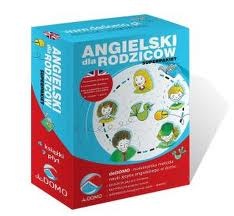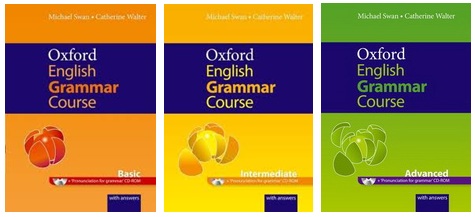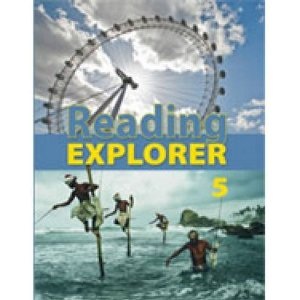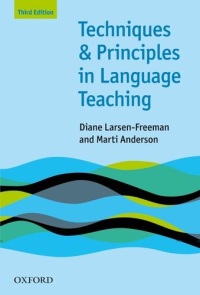Short Book Reviews
Hanna Kryszewska, Poland
Hanna Kryszewska is a teacher, teacher trainer, trainer of trainers. She is a senior lecturer at the University of Gdańsk, and EU Teacher Training College where she trains pre-service teachers. She is co-author of resource books: Learner Based Teaching, OUP, Towards Teaching, Heinemann, The Standby Book, CUP, Language Activities for Teenagers, CUP and a course book series for secondary schools: ForMat, Macmillan. She is also co-author of a video based teacher training course: Observing English Lessons. Hania is a Pilgrims trainer and editor of HLT Magazine.
E-mail: hania.kryszewska@pilgrims.co.uk

Angielski dla Rodziców. G. Śpiewak and A. Szeżyńska (2009) deDomo Education. This publication is an innovative idea aimed at the Polish market. However, the principle is worth sharing and hopefully there will be adaptations for other markets. (You will find more about the rationale in the Publications section of HLT). The idea seems so simple yet it is a stroke of genius. Many great inventions are simple, after all. Basically the authors tap into the parents’ desire for their children to master English and use it in a communicative way; we all know that when children learn in a big group they learn some songs, can say a few sentences in English, can read and write but they cannot communicate freely. So the idea of the authors is that the parents speak English to their children at home. But they do not become teachers of their kids. The teachers are at school while the parents are people at home who instead of using their mother tongue use English in every day informal situations. They can also do things in English which teachers cannot do in class, such as shop, cook and eat, chop wood, dig in the garden, or talk the child to sleep etc. Teachers have limitations including: time constraint, size of the class, health and safety, money, just to name a few, while parents are frequently involved in such situations at home. The author’s see in this the parents’ unique chance to use English in new contexts.
The material has a psychological undercurrent which is based, as the authors describe it, on the ‘carrot’ method ( no stick). There are rewards for when the children use , for example, use English. On the linguistic level the material is rooted in the Lexical Approach as the language that is to be used comes in fixed chunks ready to be used in concrete situations. There are three books that contain the language that parents are likely to use with their kids, depending on their age. Needless to say this is a linguistic menu to choose from as the language used at home will depend on the time of the year; different chunks will be used in the summer, different in the winter and yet another lot when preparing a birthday party. So parents get a lot of language help if they decide to embark on the project, also when comes to pronunciation. The material contains two CD’s with the language recorded by native speakers. So to sum up the benefits, children learn to use English in real life situations at home with the parents, and additionally the parents brush up their English or learn with their kids. However, the success of the project depends on the parents’ perseverance and consistency. With grown up kids who have flown the nest and no grandchildren yet I cannot test it myself, though willing.

Oxford English Grammar Course: Basic. Intermediate. Advanced. M. Swan and C. Walters. Oxford University Press. (2011). ISBN 978-0-19-457739-4, pp72, ISBN 978-0-19-457719-9, pp.93, ISBN 978-0-19-442077-8, 978-0-19-442082-2, 978-0-19-431250-9, (pp. between 362 and 342). Generations of language learners have studied and mastered English grammar from books by Michael Swan and Catherine Walters. The new grammar course is suitable for language learners in the the 21st century. It combines the traditional well tested approaches of the past with more recent ones. The traditional approaches for presenting grammar include: the use of grammar tables, time lines, lists of grammar rules, while for practising grammar the authors use among others: making sentences from a table, putting verbs in the correct tense or putting the word in the correct place. The more innovative and modern ways of presenting grammar in these books include the use of visual material and photographs taken in ’the street’, cartoons and authentic texts form a variety of sources, including the Internet and poems. In the practice sections the authors include, among others, lexical chunking and open creative exercises. There are two new features which I find very useful in a grammar book: a list of grammar terms to help the learaers understand the metalanguage used by the authors and the ‘Pronunciation for grammar‘ CD-Rom. The books contain such a wealth of material that the teacher will have to be selective. Last not least when diplayed on the shelf the books catch your eye because of a great choice of colours for the covers; they look like exotic fruit you want to sample.

Reading Explorer 5. B. Rogers. (2012) Heinle CENGAGE Learning. ISBN 978-1-111-35600, pp 256. This book belongs to a six level series of books which have been developed in conjunction with National Geographic. It uses adopted texts, images and videos to develop reading skills and expand vocabulary. The book is divided into 12 units and it covers subjects like: the end of empires, outer space, the human body, Islam and the West etc. This book like all the other ones in the series offers a truly innovative approach to thinking about developing materials for language teaching. This is mainly due to the real world content based on original texts supported by fantastic visual materials; all from National Geographic. The book helps the learners to find out about the world we live in as well as learn English. In this sense the book is a truly CLIL course book. This also justifies the focus of the book on extensive reading with lots of vocabulary work of various kinds including word partnerships, fixed expressions and collocations relating to the given topic. However, productive skills and grammar are not the focus of the book therefore it could not be used as a coursebook, only as supplementary material. If teachers choose this book as their main course book they will have to supplement it with their own materials.

Techniques & Principles in Language Teaching. D. Larsen-Freeman and M. Anderson (2011) Oxford University Press. ISBN 978-0-19-442360-1, pp 252. This is the third edition of a book that has become an ELT classic. This edition has been co-written by Marti Anderson, an educational and teacher training consultant. The earlier editions have been widely used as an introduction to language teaching methodology and the most popular approaches. The third edition is suitable for both pre-service and in-service teachers as apart form introducing the more traditional and seasoned approaches it also takes on board new developments and trends in ELT in the last decade or so. This is why teachers who studied from the earlier editions of the book will find in it a very informative update. Two chapters worth mentioning are: the use of digital technology and discussion on the political dimensions of language teaching. Personally I wish lexical chunking and spoken grammar had been included in this edition. Perhaps in the next one.

Please check the Methodology and Language for Kindergarten Teachers course at Pilgrims website.
Please check the Methodology and Language for Primary Teachers course at Pilgrims website.
Please check the Methodology and Language for Secondary Teachers course at Pilgrims website.
Please check the Methodology for Teaching Spoken Grammar and English course at Pilgrims website.
Please check the CLIL: Content and Methodology for Secondary Teachers course at Pilgrims website.
Please check the How to be a Teacher Trainer course at Pilgrims website.


|